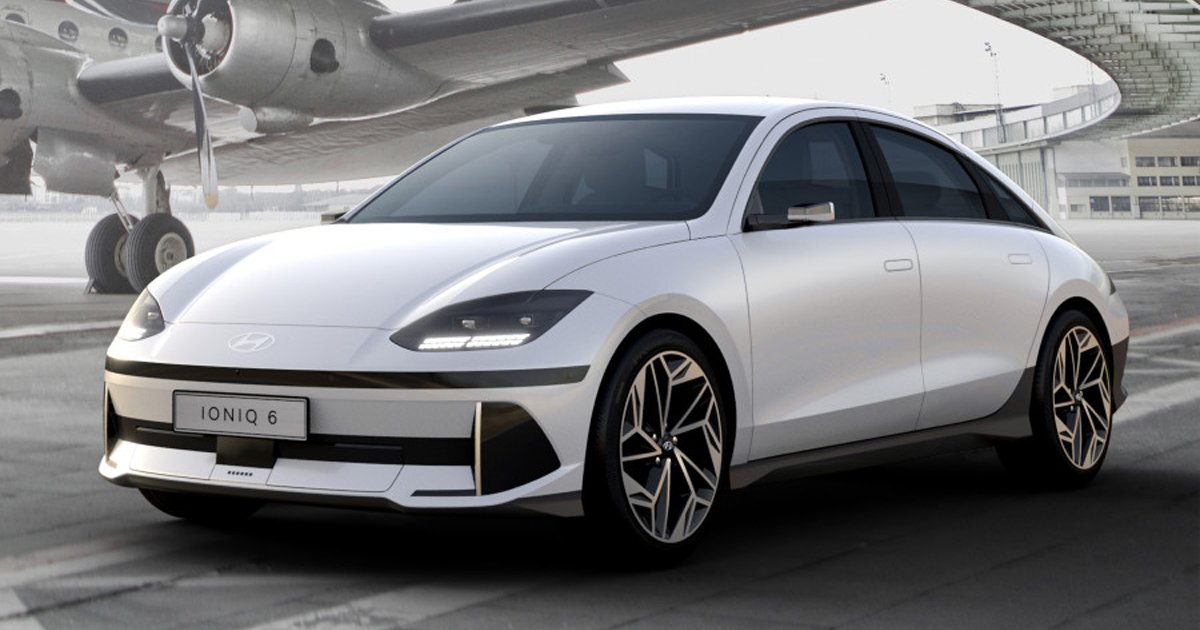
Hyundai’s second dedicated electric vehicle, the Ioniq 6 with sleek, “streamliner” styling, will be aimed at Gen Z buyers who the Korean automaker hopes will appreciate its distinct exterior design, upscale interior and innovative features.
SangYup Lee, who heads up Hyundai’s design center, said the Ioniq 6 was created with “perfect harmony between functionality and aesthetics” with an the interior that is “more the living space than the driving space.”
Hyundai officials this week released more details about the car, first shown in Korea late last month.
The Ioniq 6’s aerodynamic shape offers a drag coefficient of 0.21 and high energy efficiency. Built on Hyundai Motor Group’s Electric-Global Modular Platform, or E-GMP, it is 191 inches long, 74 inches wide and stands 58.8 inches tall. Its 119-inch wheelbase can be supported by either 20- or 19-inch wheels.
A performance “tune-up” system will allow drivers to adjust steering effort, motor power, accelerator sensitivity and driveline mode. There also is an interior soundtrack, Electric Active Sound Design, that Hyundai says adds a spaceship-like sound that changes depending on driving status.
The ability to transform the interior from a cockpit into a resting zone or workspace also was also a top goal of designers. The front seats are 30 percent thinner compared with most vehicles, making the cabin roomier.
A bridge-type console offers a level surface for a laptop, and there are four USB-C ports, one USB-A, a 110-volt outlet underneath the back seat and vehicle-to-load capability from the main charging port, which can power small appliances and devices.
A 12-inch center touch screen with wireless Apple CarPlay and Android Auto is located next to a 12-inch customizable digital gauge cluster. Two phones can be connected at once via Bluetooth, and the cabin has an eight-speaker premium Bose audio system.
Hyundai released some specs for Korea and selected markets in Europe but did not confirm battery pack sizes with correlating output and range for the U.S. It’s likely that the SEL and Limited models will sit at the top, mirroring the lineup of the Ioniq 5 compact crossover.
The Ioniq 6 will offer a standard 53-kilowatt-hour battery as well as a longer-range 77.4-kWh battery. Hyundai did not disclose an EPA-estimated range for either pack but said that vehicles with the larger battery will be able travel an estimated 610 kilometers (380 miles) on a single charge, based on the Worldwide Harmonized Light Vehicle Test Procedure test cycle.
The E-GMP architecture allows ultra-fast 800-volt charging capability that will take only 18 minutes to recoup up to 80 percent of battery power.
The 77.4-kWh battery can be configured with a front- or all-wheel-drive layout. The awd dual-motor setup delivers the equivalent of 320 hp (239 kilowatts) and 446 pound-feet of torque and can go from 0 to about 62 mph (100 kw/h) in 5.1 seconds. Hyundai did not provide output for the 53-kWh battery, but it will be offered in rear-wheel drive only.
The Ioniq 6 will be equipped with Hyundai’s SmartSense suite of advanced driver-assistance safety tech, including Highway Driving Assist 2 — a combination of adaptive cruise control and lane centering that adds automatic lane changing when the turn signal is activated while driving above a certain speed.
Other active safety features include collision mitigation while the vehicle is in an intersection, changing lanes or if a pedestrian crosses the vehicle’s path. The Ioniq 6 will also adjust vehicle speed according to posted speed limits and switch high beams on and off at night. A remote parking system will allow the vehicle to enter or exit a parallel, perpendicular or diagonal parking spot.
Hyundai will announce U.S. specs for the Ioniq 6 in November. It’s likely the Ioniq 6 will be designated as a 2024 model year vehicle. It will be manufactured at a plant in Korea, with no plans at this time to build the EV in the U.S. Production for North America will begin in January with sales starting sometime in the first quarter of 2023.